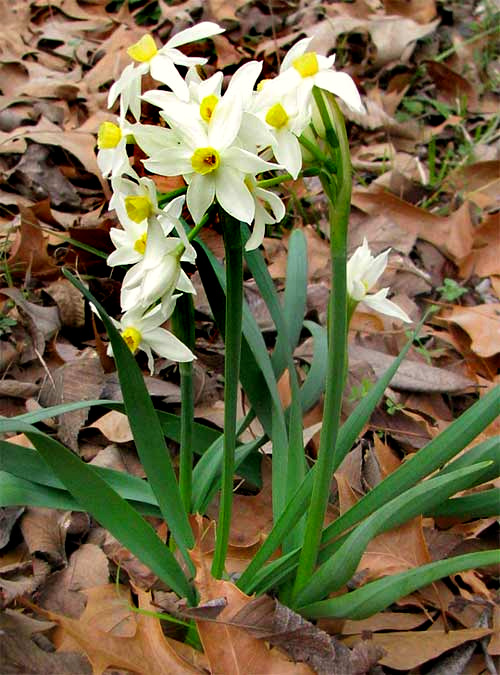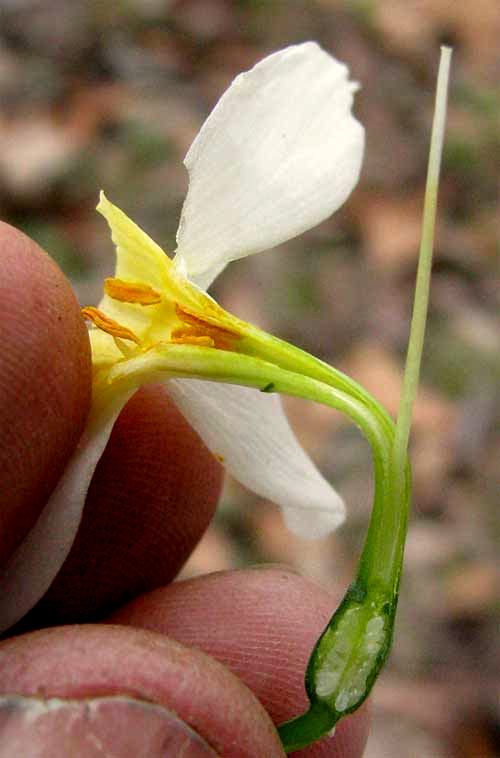
All daffodils are narcissuses (plural also narcissi or narcissus), and all narcissuses are members of the genus Narcissus. Some authorities assign Narcissus to the Amaryllis Family, and others to the Lily Family. About 26 natural species are recognized, all Old World, and five species are escaped in North America, plus an untold number of cultivars have been developed. The one at the right is the much-cultivated Paperwhite or Bunch-flowered Narcissus, Narcissus tazetta, native to the Mediterranean region from Portugal to Turkey.
There's something so elegant and simple-seeming about narcissus flowers, especially when they first bloom in early spring, that makes them worthy of meditation. That meditation may be enhanced by knowing what's being admired.

At the left, the broad, white, petal-like appendages are tepals. The term tepal is used for the subdivisions of a flower's corolla-like parts when a flower's calyx is indistinguishable from its corolla. Narcissuses bear six tepals.
You can see that the six tepals arise atop atop a cylindrical tube, bent to one side in the picture. Technically that's a perianth tube, and it's an important part of not only Narcissus flowers, but also of many flowers in the Lily and Amaranthus Families.
Note that stamens arise at the perianth tube's top, or "mouth." There are six stamens mounted at two different levels. The flower "wants" its stamens of this size but also "wants" a narrow tube, so this solution of biggish stamens at two heights is the result. Such a practical but ungeometric solution in such a pretty flower is worth meditating on.
Also, notice the papery, yellow, wall-like extension of the tube at the tube's mouth. On an intact flower, it's cup-like, and in some cultivars it's quite long. Nothing like this appears on our Standard Blossom, so this is an unusual feature. It called the corona, or crown. Usually it's suggested that coronas help attract pollinators.
In the above picture, the straight, white item at the far right is thestyle tipped with a minutely 3-lobed stigma. Pollen grains germinate on the stigma, send their male-sex-germ-carrying pollen tubes down through the style, enter the ovary beneath the perianth tube, and finally make their way to an ovule, which is one of the tiny white items stacked in the ovary. When the male sex germ units with the female sex germ inside the ovule, fertilization is accomplished.
Then as the pretty flower with its stamens fades and drops away, the ovary left behind grows and matures into a capsular fruit, while the ovules inside mature into seeds.
It's all good stuff on which to meditate in early spring.